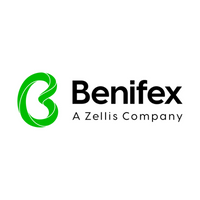How to build a recognition strategy for a hybrid workforce in 4 steps

No greater challenge has presented itself to the world of work in the last decade or more, and this now provides HR teams and reward teams with an opportunity to continue developing or build a new recognition strategy that works for the employees of today and tomorrow – a hybrid strategy for a hybrid workforce.
Step 1: Review how you currently provide recognition
• Before you can start planning your recognition strategy, you need to take stock of all the current ways your organisation is providing recognition to employees.
• Capture everything: begin with the smallest ways in which every single level of seniority can acknowledge the work of others in the business. Maybe it’s buying coffee at the local coffee shop and allowing managers to expense one coffee per direct report every quarter. Maybe it’s sending emails directly to an employee to say ‘thanks’. Perhaps they’re just used to chatting in the office and that recognition comes out naturally.
• Work your way up to the grandest of gestures your business has in place. This might be annual nomination awards, awarding a holiday to the most successful sales person, bonuses for the highest-performing teams, or maybe it’s a dinner with the chief executive.
• There will still likely be some gaps. This is to be expected, because some of the ways in which teams are recognised and rewarded might not be officially sanctioned, but would have still occurred in the old way of working. For example, a manager might pay for their team to have an outing to an escape room or going for drinks after work. To fill in the gaps, speak with people around the business.
Step 2: Converting all in-person recognitions to online
The next stage is to take all your knowledge from Step 1 and translate it to work online. This doesn’t need to mean ‘just make it all fully-functional for hybrid employees’ (yet), it just means find ways to take those offline gestures online.
Pull together a master list from everything you learned in Step 1 and mark all the items which are in-person methods of recognising the amazing work being done in your organisation. Everything that falls within that category will either need to be scrapped altogether – or, more ideally converted.
For example:
• Allowing managers to expense a £5 coffee every quarter translates well into a £5 digital reward; offering this via an online platform is simplest as it avoids administrative hassle.
• Nominations are another big one that many organisations offer – moving these to a digital platform will not only enable nominations for a hybrid workforce, but will significantly simplify the admin involved.
• Other ways you show recognition offline may have to become simpler – for example, a ‘winner’s circle’ dinner with the chief executive can instead become a video message that’s posted to the digital recognition platform you use, paired with an email that directs all employees to the site. For rewards like this, you can also keep the financial reward aspect and gift the value of that reward to the employee (privately) seamlessly through your online platform.
• Once you’ve gone through your existing ways of recognising employees and digitalised them, your proposal to convert in-person methods of giving recognition is almost ready for reviews and approvals.
Step 3: Budgeting for your new scheme
For Step 3, it’s time to break out Excel and add everything up. As with all steps, working with a provider who can offer experience and expertise in online recognition programmes will be incredibly helpful. In my experience, budgeting tends to break down in the following ways:
• Some methods of giving recognition within the business will have to be considered as a new expense (ie, if making it digital means buying new software).
• Other methods will add money back into the business and will greatly help to offset any new costs, such as the difference in cost between a digital voucher and an in-person event.
• Speak to various providers who you believe can tick all the boxes your company needs to make the shift to online reward and recognition.
• A pro tip for creating a business case: calculate the total time you, your team, or anyone else would spend making the ‘old way’ run, eg:
– Break down each individual contributor’s salary into an hourly wage
– Multiply the time dedicated to reward and recognition before by their salary
– Add it up, and include that as a cost in your business case
– Your preferred supplier should be able to help you gauge how much time you’ll be saving, determining the delta of an actual cost saving.
Step 4: Get approvals and get excited
The final step in building a recognition strategy for a hybrid workforce is approval. While often the most daunting stage, remember you’ve put in the work, you know the business case and you know this is what’s best for your business and employees’ experience.
What I’ve seen across all customers – no matter what scheme they start with or what their planned scheme looks like - is that while it may take some work to make the transition from in-person to hybrid-appropriate, they do make back that time in dividends (and money).
Moving to an all-digital platform that’s a ‘one stop shop’ for nominations, milestones, recognition and rewards will save your HR and reward team infinite hours of admin each month, while simultaneously reducing the chance of errors because of the shift away from manual work (such as needing to mail things out or send reminders to managers).
So find a system that works for your people and ways of recognising great work, and let it do all the heavy lifting for you.
The author is Lauren Goldgrub, general manager of recognition, Benefex
Article provided by Benefex
Supplied by REBA Associate Member, Benifex
The home of award-winning employee benefits, reward, recognition, & communications.







